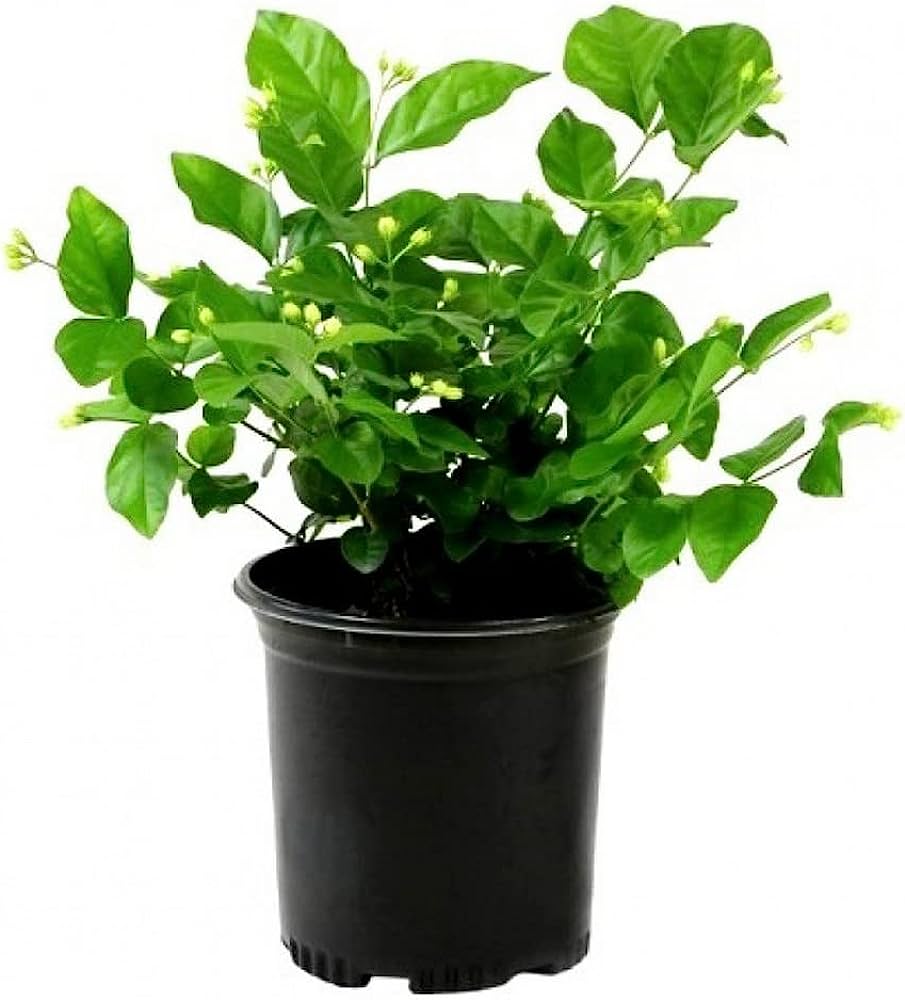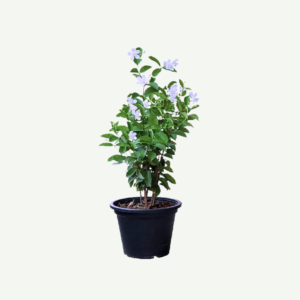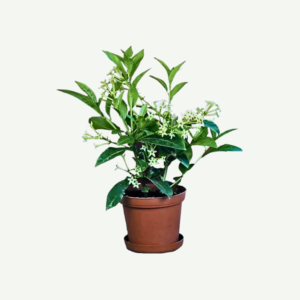Jasmine sambac, scientifically known as Jasminum sambac, is a highly fragrant and beautiful flowering plant belonging to the Oleaceae family. Commonly known as Arabian jasmine or Sampaguita, it is native to Southeast Asia, particularly in countries like India, Myanmar, and the Philippines. Jasmine sambac is revered for its captivating fragrance and is widely used in perfumery, religious ceremonies, and traditional floral decorations.
Cultural Significance:
Jasmine sambac holds cultural and religious significance in many countries. It is often used in wedding ceremonies, religious rituals, and traditional events as a symbol of purity, love, and good fortune.
In some cultures, the flowers of Jasmine sambac are used to make leis and garlands, which are worn or offered as a gesture of hospitality and respect.
Landscape Use:
Jasmine sambac is commonly grown as an ornamental plant in gardens, landscapes, and outdoor spaces where its fragrance can be appreciated.
It can be grown in containers or pots on patios and balconies, allowing the fragrance to waft into outdoor seating areas.
Due to its bushy growth habit, Jasmine sambac is also used as a hedge or a screen to provide privacy and add beauty to outdoor spaces.
Overall, Jasmine sambac is a captivating and aromatic plant that has a special place in the hearts of many cultures. Its intoxicating fragrance and charming appearance make it a favorite among gardeners and flower enthusiasts looking to add a touch of elegance and delightful scent to their outdoor spaces.
Here’s a general description of Jasmine sambac:
Plant Characteristics:
Flowers: The most striking feature of Jasmine sambac is its waxy, white flowers with five or more pointed petals. The flowers are small, star-shaped, and bloom in clusters. They release a powerful, sweet fragrance, especially in the evening, which attracts pollinators like moths and butterflies.
Leaves: Jasmine sambac has glossy, dark green leaves that are usually oval or lance-shaped and arranged opposite to each other along the stem.
Growth Habit: Jasmine sambac is a bushy, evergreen shrub that can grow up to 3 to 6 feet (90 to 180 centimeters) in height. It has a dense and compact growth habit, making it an excellent choice for hedges or container planting.
Cultural Requirements:
Light: Jasmine sambac thrives in full sunlight but can also tolerate partial shade. It prefers at least 4 to 6 hours of direct sunlight daily for optimal growth and blooming.
Temperature: Jasmine sambac prefers warm temperatures and is sensitive to frost. It is well-suited to tropical and subtropical climates, where it can bloom year-round.
Watering: Jasmine sambac requires regular watering, especially during the growing season. Keep the soil consistently moist but not waterlogged. Proper drainage is crucial to prevent root rot.
Soil: Jasmine sambac grows well in well-draining, fertile soil with a slightly acidic to neutral pH.
Fertilization: Regular fertilization with a balanced, diluted liquid fertilizer during the growing season (spring a






